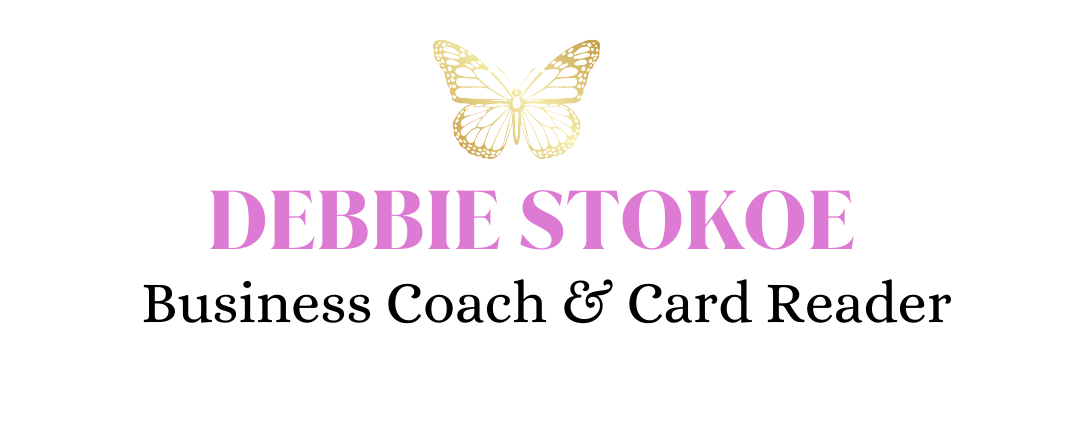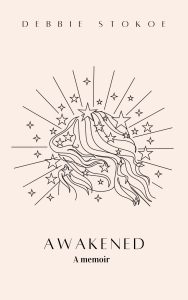Right now, it seems like just about everyone has jumped on the Frida bandwagon. God forbid, Theresa May had her image on a bracelet at last year’s Conservative Party Conference (I’m sure FK would have turned in her grave). A
Frida Barbie caused uproar upon its release last year due it’s lack of her iconic monobrow. I’m not going to knock the
2002 biopic starring Salma Hayek though (I loved it even it isn’t historically accurate). Yes, it’s ‘cool’ to like Frida, but it’s even cooler to really dive deep into her work and her life, and begin to understand what made her tick.

When the V&A in London announced an exhibition of her personal items and work, I knew I couldn’t miss it. After suffering from mental health issues numerous times in my life, when I hit a low point I tend to reach for one of my Frida books for inspiration and hope. She turned her pain into beauty and created art that seems connected to the Divine. She inspired me to write when I feel depressed, even when I don’t feel like it (it’s a healthy distraction). Apart from her prolific artistic talent, what else pulls us like moths to a flame to Magdalena Carmen Frida Kahlo y Calderón, sixty-four years after her death? We can maybe identify in some way with her physical pain (polio at six then injuries caused by a horrific tram accident at eighteen) and emotional turmoil (loving someone who cheated on her with her sister) and even her own ‘stuff’ (numerous affairs with both sexes/three miscarriages)? Whatever the reason, we can’t seem to get enough of her unique life and spirit (also evidenced by the jaw-dropping gift shop waiting for you when you exit the V&A exhibition).
 |
| Frida in flowers, a Frida inspired selfie, the extensive books on offer and some amazing cushions |
So how did
Making Her Self Up come about? After her death in 1954, Frida’s many possessions (clothing, jewellery and other personal items) were locked away for fifty years in the bathroom of her lifelong home Casa Azul (The Blue House) in Mexico, according to the wishes of her husband, Diego Rivera and her friend Dolores Olmedo. In 2004, the room was opened and the collection was catalogued and restored over time (her dresses have been on display since 2012). Now 200 of her possessions have been loaned to the V&A and on display for the first time outside of Mexico, alongside key self-portraits, photographs and film (seeing her on film is magical). You can’t take photos in he exhibition, so I’m mainly going to include images of her work here.
The exhibition starts with Frida’s childhood, family portraits and some early self-portraits. It’s fascinating to find out more about her parents – her father,
Guillermo Kahlo was a German Mexican photographer whose work had historical importance (he photographed Mexican architecture at the turn of the century). Frida contracted polio when she was six, which affected her leg and isolated her from her peers. It wasn’t to be her first brush with ill health. At 18, she was involved in a bus collision and fractured many bones, including her pelvic bone. I found that that poetically her injured body was found covered with specks of gold leaf which were meant for the National Theatre.
It was interesting to find out about the Mexican muralist movement, of which Frida’s husband Diego Rivera was a central figure. A famous quote of hers is “there have been two great accidents in my life – the streetcar and Diego” which encapsulates their love/hate relationship well. They married in 1929, when he was 42 and she was 22 (she referred to them as ‘the Elephant and the Dove.’) I had never seen her painting “The Bride Frightened at Seeing Life Opened” (1939) before but I was transfixed. The fruit imagery is quite sexual, very yin and yang. The little bride on the left and the open papaya weren’t added until a few years later, which suggests the influence of the avant-garde surrealists.
 |
| The Bride Frightened at Seeing Life Opened – Frida Kahlo (1943) |
Then I was bowled over by “Self Portrait Between the Borderline of Mexico and the United States” (1932). She painted it in Detroit; it depicts her feelings about living in the US for a while (she felt homesick and miserable). It also makes a statement about politics and power in the USA. Her personal and intimate work is a real contrast to her husband’s huge murals.
 |
| Self Portrait Between The Borderline of Mexico and the United States (1932) |
I was mesmerised by watching Frida on film, there’s some footage by Trotsky showing Frida and Diego, Frida is sketching and smoking with her Russian guest/lover and his wife. In some more footage you can see her surrounded by beautiful things – shells, dolls and paper mâché figures. There are also sections on the Mexican Revolution (1910-1920) and matriarchal culture which give the exhibition wider context. One of the most interesting and moving sections involves Retablos or Miracle Paintings – devotional paintings on tin using iconography from the Church (Christ, Mother Mary). They tell the story of a life threatening event that happened to someone (accident/illness) where the person survived due to some divine intervention, and are created to thank the sacred person that protected them. It was fascinating to read about some of the things that happened to people and the miracles that ensued.
 |
| The Broken Column (1944) |
Apparently Frida stopped people in their tracks in San Francisco, adorned with her colourful Rebozos (shawls) and outlandish jewellery. Her personal possessions are displayed in glass cases framed by replicas of her famed four poster bed. Seeing flecks of paint on her dressed and jewellery is a real thrill. I was struck by her tiny decorated lace-up boots and her shoes (the front of one had been cut away to ease her gangrene). Anyone dealing with pain or illness just needs to take one look at Tree of Hope, Remain Strong (1946) for inspiration. The sheer number of medication and painkiller bottles (opioids/stomach meds) on display gives you an idea of what she went through, as well as a lengthy medical history which is enough to make your eyes water. Her medical corsets and spinal braces again are symbolic of her pain and long periods spent immobilised (when she painted, a double-edged sword). I was surprised to see something so personal as her pregnancy test result (positive before she miscarried), and felt like a bit of an intruder reading her love letters to her lover, photographer Nikolas Muray.
 |
| Tree of Hope, Remain Strong (1946) |
Juxtaposed with symbols of pain and suffering are her colourful personal possessions – Schiaparelli, Chanel, Roger & Gallet and Guerlain perfume, bright Revlon nail varnishes and lipsticks. There’s a photo of Diego with a lipstick mark. Her outfits are one of the highlights of the exhibition. I especially loved her French cape and skirt, magenta Rebozo (shawl), embroidered Huipils (tunics) as well as her Tehuana dress, a symbol of female power in a matriarchal society. She fashioned the garment over time to reflect her own identity and heritage. Her jewellery is particularly stunning (especially her rings and jade necklace).
 |
| Her stunning outfits/her clothes in The Two Fridas (1939) and Me and My Doll (1937) |
Making Her Self Up accurately portrays Frida’s fierce individuality and defiance in the face of major adversity. Andre Breton’s quote calling her “a ribbon around a bomb” seems scarily accurate. I was left quite emotional by the experience (and a bit frustrated by the sheer number of people in there – try and go early or later to avoid the crowds). I think seeing her paintings affected me the most. Yes her possessions tell a powerful story but I think the best way to understand her is to really understand her work. You leave the exhibition and enter into what can only be called a Frida Fest – the gift shop will be heaven for die-hard Frida fans. Books, clothing, posters, art, flower headbands – you name it, they’re selling it.
Frida Kahlo Afternoon Tea – The Lanesborough, London
I knew that I wanted to do a Frida themed experience during my trip to London but I struggling to make up my mind, because currently there are quite a few (check out the
Frida Bottomless Brunch at London Street Kitchen and the
Frida Kahlo Afternoon Tea at The Franklin Hotel). I decided to opt for the Frida inspired Afternoon Tea at
The Lanesborough, in Knightsbridge. After the exhibition I took the tube to Hyde Park Corner, emerged from the station and there it was, a beautiful, luxurious 5* hotel. I immediately felt underdressed but I was practically a tourist so what the hell. I was escorted to a beautiful, opulent dining room and made to feel like a celeb for a few hours. The staff were super friendly and wanted to hear all about the exhibition (twenty minutes later I think the poor waitress was trying to escape). I was brought the beautiful
menu and decided to have the Mexican Hot Chocolate instead of tea or coffee, and I didn’t take much persuading to order a Marguerita (it was probably the best one I’ve ever had).
 |
| The Frida Kahlo inspired Afternoon Tea at the Lanesborough is delicious! |
The Frida afternoon tea was created by Michelin starred Head Pastry Chef Gabriel Le Quang. Inspired by the colours, shapes and textures of her life, it was split into two parts (sandwiches first, then pastries and cakes). The finger sandwiches were pretty traditional (egg and watercress, cucumber and mint, salmon and cream cheese – the Mexican flourish being the Chicken Tinga and traditional Guacamole) and I was already quite full by the time I’d finished them. Luckily I was nursing three drinks (water, cocktail and hot chocolate) so I gave myself a break before making a start on the Frida pastries, which were almost too pretty to eat.
Oh God, the pastries. Her stoic, colourful face stared out from atop the Passionfruit and Raspberry Eclair, and tasted fruity and divine. I love chilli chocolate so the Mexican Chocolate Tartlette garnished with sugar flowers was also a hit. As if I didn’t need anymore Margarita, this boozy twist on classic Rum Baba was soaked in agave and tequila. There was also a flower shaped biscuit (corn sable) filled with glorious dulce de leche and a beautifully decorated mini carrot cake. I would usually share this with someone else so by the end of it I was totally stuffed and didn’t need to eat again until the next day. After getting emotional at the exhibition it was the perfect way to celebrate Frida and enjoy being in such a wonderful building. The staff even gave me a tour of the out-of-this-world
spa (words cannot describe how amazing it is).
I highly recommend organising your day or even weekend around this incredible human.
Frida Kahlo: Making Her Self Up is at the V&A until Sunday 4th November 2018. Buy tickets here









